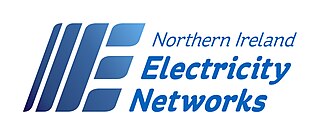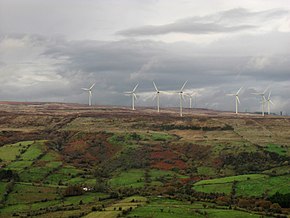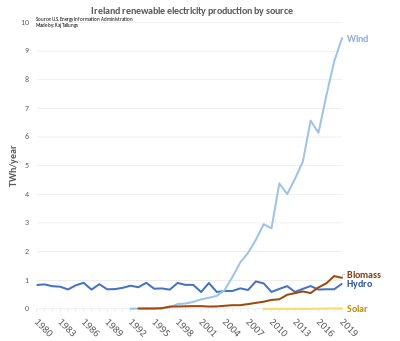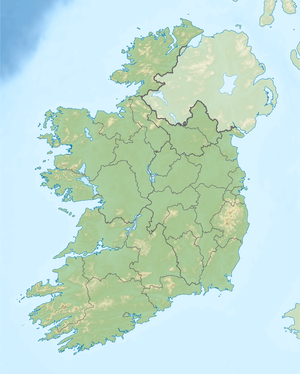
A public utility company is an organization that maintains the infrastructure for a public service. Public utilities are subject to forms of public control and regulation ranging from local community-based groups to statewide government monopolies.

The electric power industry covers the generation, transmission, distribution and sale of electric power to the general public and industry. The commercial distribution of electric power started in 1882 when electricity was produced for electric lighting. In the 1880s and 1890s, growing economic and safety concerns lead to the regulation of the industry. What was once an expensive novelty limited to the most densely populated areas, reliable and economical electric power has become an essential aspect for normal operation of all elements of developed economies.

The Electricity Supply Board is a state owned electricity company operating in the Republic of Ireland. While historically a monopoly, the ESB now operates as a commercial semi-state concern in a "liberalised" and competitive market. It is a statutory corporation whose members are appointed by the government of Ireland.
Ervia, previously known as Bord Gáis or Bord Gáis Éireann, is a multi-utility company distributing pipeline natural gas and dark fibre services in Ireland. The state-owned company has built an extensive network across Ireland.

The National Grid is the high-voltage electric power transmission network serving Great Britain, connecting power stations and major substations, and ensuring that electricity generated anywhere on the grid can be used to satisfy demand elsewhere. The network serves the majority of Great Britain and some of the surrounding islands. It does not cover Northern Ireland, which is part of the Irish single electricity market.

Northern Ireland Electricity Networks Limited (NIE Networks) is the electricity asset owner of the transmission and distribution infrastructure in Northern Ireland, established in 1993 when the business was privatised. NIE Networks does not generate or supply electricity. Since 2010 it has been a subsidiary of ESB Group.
The East–West Interconnector is a 500 MW high-voltage direct current submarine and subsoil power cable which connects the Irish and British electricity markets. The project was developed by the Irish national grid operator EirGrid.

EirGrid plc is the state-owned electric power transmission operator in Ireland. It is a public limited company registered under the Companies Acts; its shares are held by the Minister for the Environment, Climate and Communications. It is one of a number of Irish state-sponsored bodies and is regulated by the Commission for Regulation of Utilities.
Project EnergyConnect is a new electricity transmission line under construction which will connect the South Australia and New South Wales districts of the National Electricity Market in Australia. Riverlink was a previous working title for the project, drawn from a proposal first raised in 1999. The Australian Energy Market Operator used RiverLink in its proposal for this interconnector, but the transmission companies in South Australia (ElectraNet) and New South Wales (TransGrid) now call it EnergyConnect.
Transgrid is the manager and operator of the high voltage electricity transmission network in New South Wales and the Australian Capital Territory, Australia, and is part of the National Electricity Market (NEM). The company's offices are located in Sydney, Newcastle, Orange, Tamworth, Wagga, and Yass.
The electricity sector in New Zealand uses mainly renewable energy, such as hydropower, geothermal power and increasingly wind energy. As of 2021, the country generated 81.2% of its electricity from renewable sources. The strategy of electrification is being pursued to enhance the penetration of renewable energy sources and to reduce greenhouse gas (GHG) emissions across all sectors of the economy. In 2021, electricity consumption reached 40 Terawatt-hours (TWh), representing a 0.2% increase compared to the consumption levels in 2010.

An electrical grid is an interconnected network for electricity delivery from producers to consumers. Electrical grids consist of power stations, electrical substations to step voltage up or down, electric power transmission to carry power long distances, and lastly electric power distribution to individual customers, where voltage is stepped down again to the required service voltage(s). Electrical grids vary in size and can cover whole countries or continents. From small to large there are microgrids, wide area synchronous grids, and super grids.

The electricity sector in Iceland is 99.98% reliant on renewable energy: hydro power, geothermal energy and wind energy.

Ireland is a net energy importer. Ireland's import dependency decreased to 85% in 2014. The cost of all energy imports to Ireland was approximately €5.7 billion, down from €6.5 billion (revised) in 2013 due mainly to falling oil and, to a lesser extent, gas import prices. Consumption of all fuels fell in 2014 with the exception of peat, renewables and non-renewable wastes.

The Electricity Act 1989 provided for the privatisation of the electricity supply industry in Great Britain, by replacing the Central Electricity Generating Board in England and Wales and by restructuring the South of Scotland Electricity Board and the North of Scotland Hydro-Electric Board. The Act also established a licensing regime and a regulator for the industry called the Office of Electricity Regulation (OFFER), which has since become the Office of Gas and Electricity Markets (OFGEM).

Bord Gáis Energy is a utility that supplies gas and electricity and boiler services to customers in the Republic of Ireland. Bord Gáis Energy has been in operation in some form since 1976 and supplies over 750,000 customers with energy in Ireland. Since mid-2014 Bord Gáis Energy is also part of the British Centrica plc Group. Bord Gáis Energy has offices in Dublin and Cork as well as having boiler service technicians nationwide. Bord Gáis translates as "Gas Board", although it is now a private company limited by shares and part of Centrica plc, which also owns British Gas.

The Commission for Regulation of Utilities, formerly known as the Commission for Energy Regulation, is the Republic of Ireland's energy and water economic utility regulator.
The Caithness–Moray Link is a 160 km (100-mile) HVDC submarine power cable beneath the Moray Firth in Scotland, linking Spittal in Caithness and Blackhillock in Moray. Constructed by Scottish & Southern Electricity Networks, it is capable of transmitting up to 1,200 MW of power. It was officially completed in January 2019, under budget at a cost of £970 million, and was reported as the largest single investment in the northern Scottish electricity network since the 1950s.


















